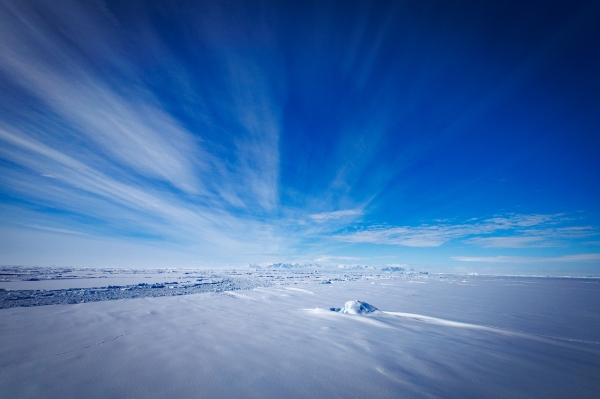When air temperatures in Antarctica rise and glacier ice melts, water can pool on the surface of floating ice shelves, weighing them down and causing the ice to bend.
When air temperatures in Antarctica rise and glacier ice melts, water can pool on the surface of floating ice shelves, weighing them down and causing the ice to bend. Now, for the first time in the field, CIRES-led research shows that ice shelves don’t just buckle under the weight of meltwater lakes — they fracture. As the climate warms and melt rates in Antarctica increase, this fracturing could cause vulnerable ice shelves to collapse, allowing inland glacier ice to spill into the ocean and contribute to sea level rise.
“Ice shelves are extremely important for the Antarctic Ice Sheet’s overall health as they act to buttress or hold back the glacier ice on land,” said Alison Banwell, a CIRES scientist in the Earth Science and Observation Center (ESOC) and lead author of the study published today in the Journal of Glaciology. “Scientists have predicted and modeled that surface meltwater loading could cause ice shelves to fracture, but no one had observed the process in the field, until now.”
The new work may help explain how the Larsen B Ice Shelf abruptly collapsed in 2002. In the months before its catastrophic breakup, thousands of meltwater lakes littered the ice shelf’s surface, which then drained over just a few weeks.
Read more at University of Colorado at Boulder
Photo Credit: Peter_McNally via Pixabay




